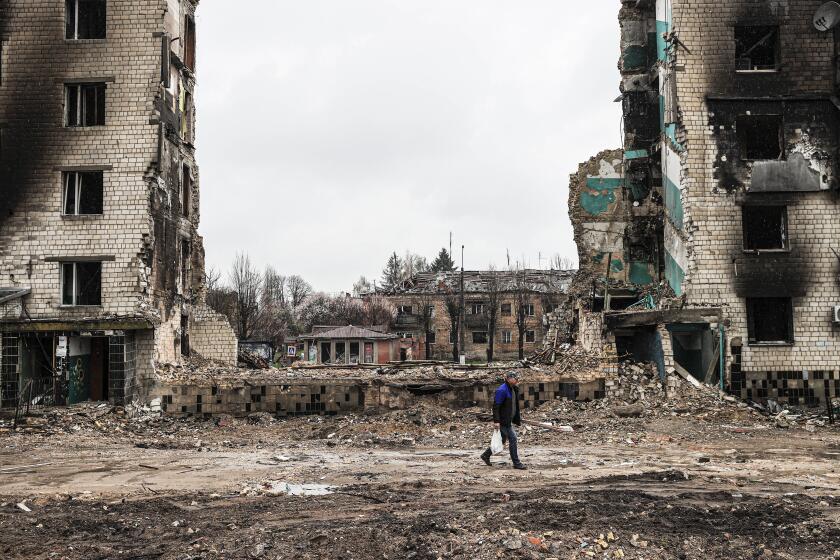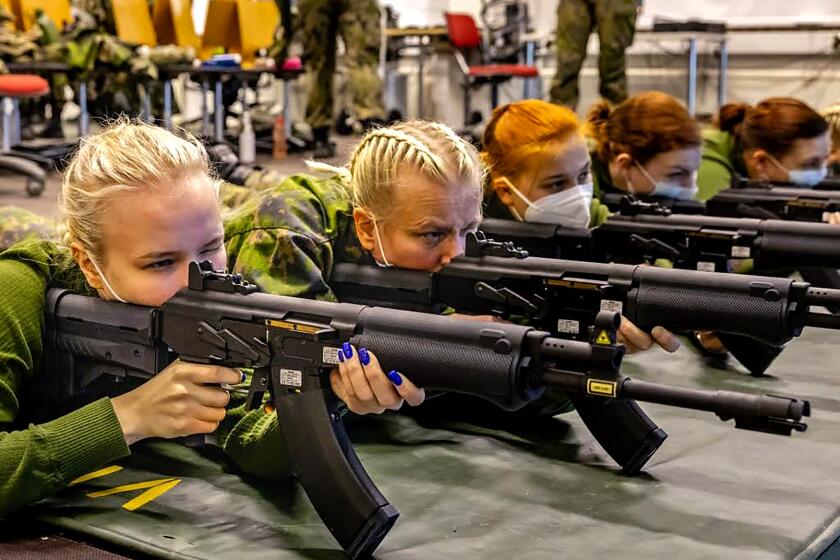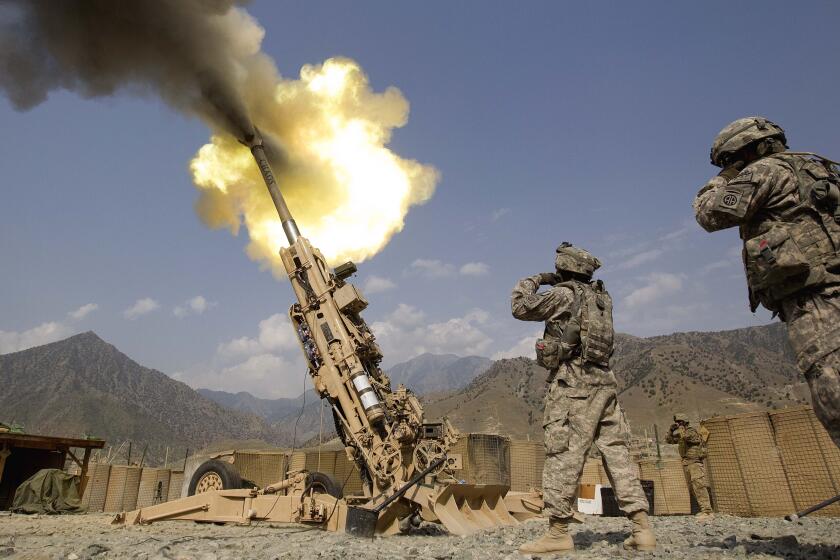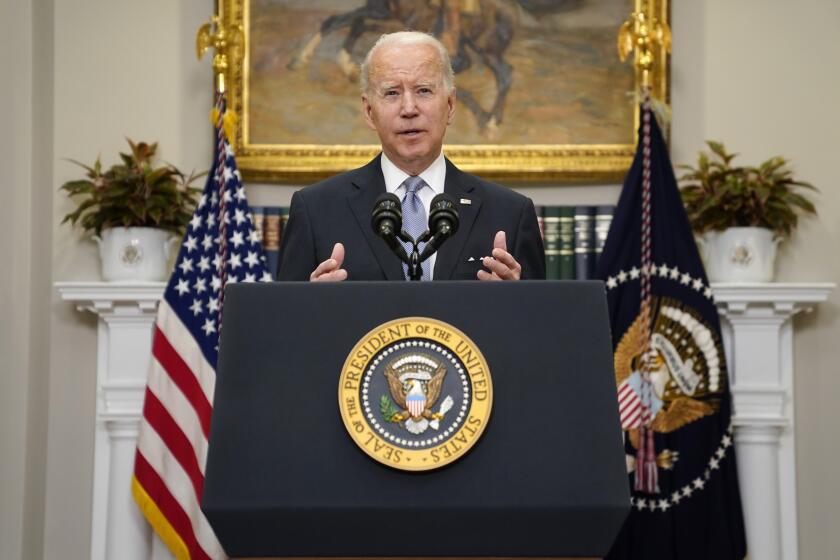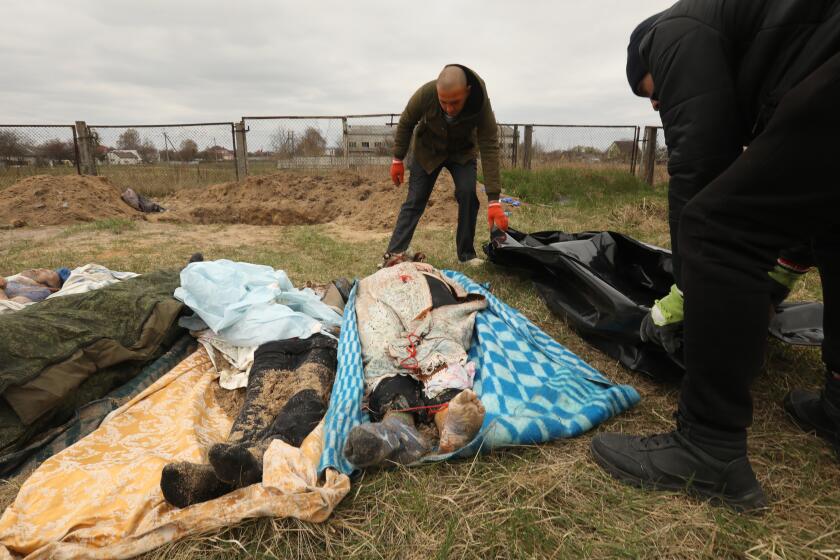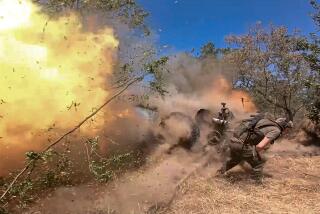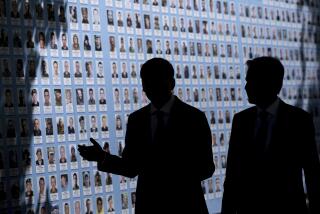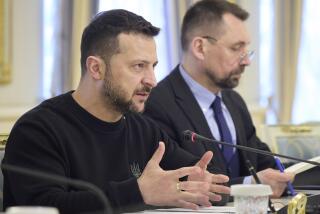Russia ‘failing’ in Ukraine war, Blinken says; explosions rock breakaway Moldova region
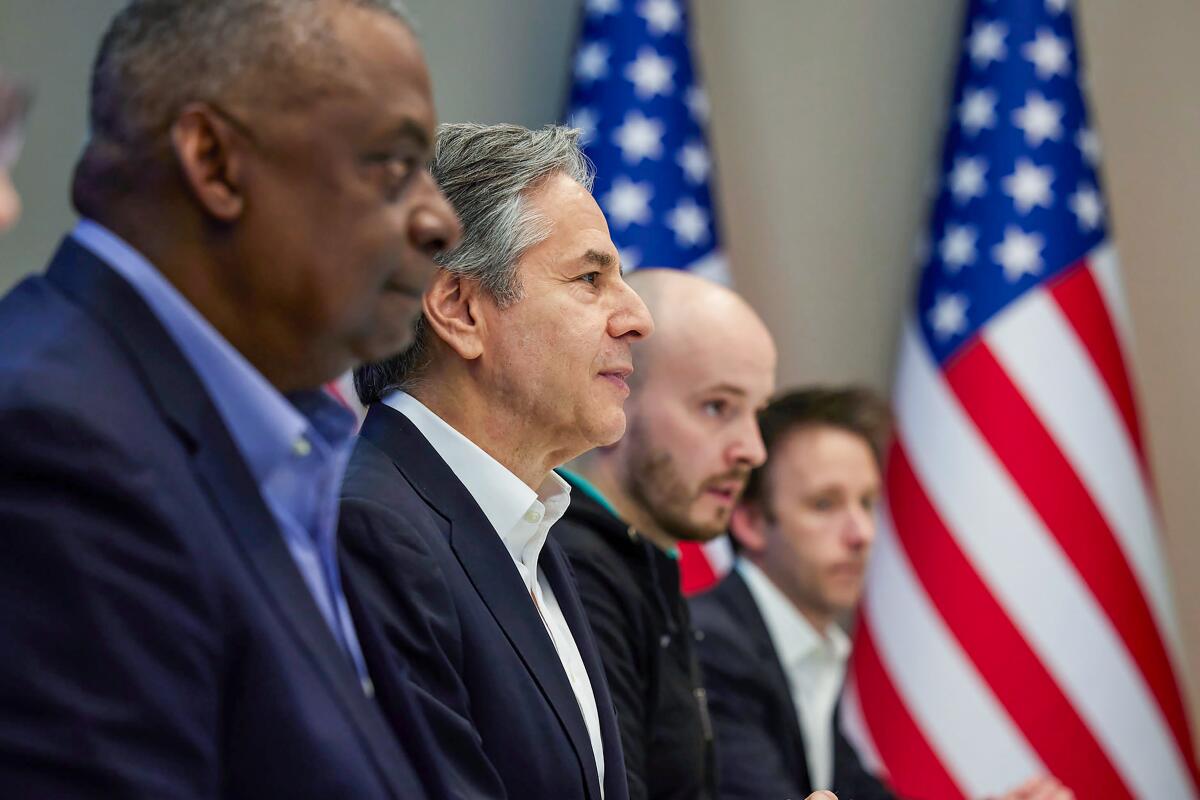
- Share via
DNIPRO, Ukraine — U.S. Secretary of State Antony J. Blinken declared Monday that “Russia is failing” in its war aims, as new fighting flared in Ukraine’s eastern battle zone and Russian forces reportedly aimed a round of airstrikes at railway facilities in the country’s west and center.
Defense Secretary Lloyd J. Austin III, who traveled with Blinken to the Ukrainian capital to meet with President Volodymyr Zelensky on Sunday, made clear that Washington‘s goals extend far beyond seeing Ukraine repel Moscow’s forces.
For the record:
8:09 a.m. April 25, 2022In an earlier version of this article, remarks about Washington wanting to see Russia “weakened” were incorrectly attributed to Antony J. Blinken. They were said by Lloyd J. Austin III.
He said he wanted to see Russia “weakened to the point” where it cannot mount such aggression again.
Blinken and Austin made their remarks to reporters after crossing into Poland from Ukraine, following the first official U.S. visit to Kyiv since the war began two months ago. In a show of support, the two announced a fresh infusion of $300 million in military aid and a revived U.S. diplomatic presence in Ukraine.
“The first step in winning is believing that you can win,” Austin said after the visit. “We believe that they can win if they have the right equipment, the right support, and we’re going to do everything we can ... to ensure that gets to them.”
Russian forces have more artillery, tanks and heavy fighting units than Ukraine, but they have been plagued by problems as they enter a pivotal battle for eastern Ukraine.
Zelensky, in an address to his nation Monday, thanked Biden and the people of the U.S. for “the strong and sincere” support.
“These are real things that strengthen not only our state, but democracy as a whole,” he said. “We share the same understanding with the United States: When democracy wins in one country, it wins all over the world.”
The coming weeks will probably be critical militarily, analysts say, with Russia having announced its determination to seize the entire Donbas, Ukraine’s eastern industrial heartland. Moscow last week also signaled aspirations to win control of the country’s southern seacoasts, which would render Ukraine landlocked, crippling it economically.
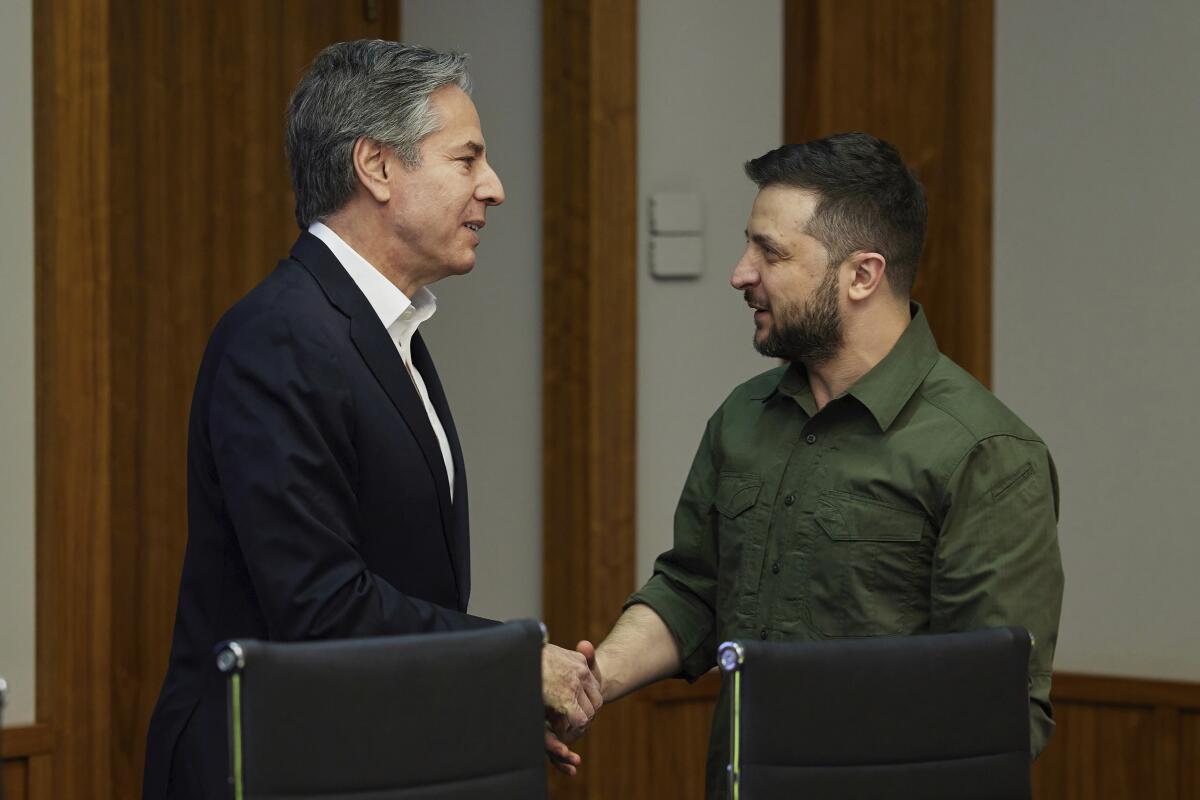
The war, which has killed thousands and created an immense humanitarian disaster, has also sparked a refugee crisis whose scale has not been seen on the European continent since World War II.
Nearly 5.2 million Ukrainians have fled into exile, according to the latest figures from the United Nations refugee agency, and almost 8 million others are internally displaced, according to separate estimates from the U.N.’s International Organization for Migration.
At the same time, there have been few major shifts on the battlefields. In the week since Russia embarked on a redoubled offensive in the east, its forces have made only “minor advances” along a 300-mile battle front, Britain’s military intelligence said in an assessment Monday.
“Without sufficient logistical and combat support enablers in place, Russia has yet to achieve a significant breakthrough,” the assessment said.
Zelensky lauded the successes of Ukrainian forces in his nightly video address, noting that 931 settlements in Ukraine had been liberated after temporary occupation by Russia.
“Many cities and communities are still under the temporary control of the Russian army,” he said. “But I have no doubt that it is only a matter of time before we liberate our land.”
Finland has long seen Russia as a threat. Now politicians and ordinary Finns are saying it aloud.
Russia’s missteps have inflicted a steep toll on its troops. British Defense Secretary Ben Wallace said in the House of Commons on Monday that about 15,000 have been killed and that about 25% of Russian battalion tactical groups sent to Ukraine have been “rendered not combat effective” as Russia has lost more than 2,000 armored vehicles and 60 helicopters and fighter planes.
Still, Moscow last week claimed what would be its biggest victory of the war: control of the strategic southern port of Mariupol, on the Sea of Azov. Ukrainian defenders continue to hold a last redoubt, a sprawling steelworks plant, which Russian President Vladimir Putin has ordered his troops to blockade.
Russia’s military Monday said it would temporarily halt hostilities at the plant to allow civilians also sheltering inside to be brought out safely. Col. Gen. Mikhail Mizintsev was quoted by the RIA Novosti news agency as saying civilians who emerged would be transported in any direction they chose.
Ukraine swiftly spurned the Russian offer, with its deputy prime minister, Iryna Vereshchuk, saying on Telegram that a unilaterally announced evacuation plan “does not provide security.” Kyiv for weeks has accused Moscow of sending thousands of Ukrainians trying to flee Mariupol to Russian-controlled areas or to Russia itself.
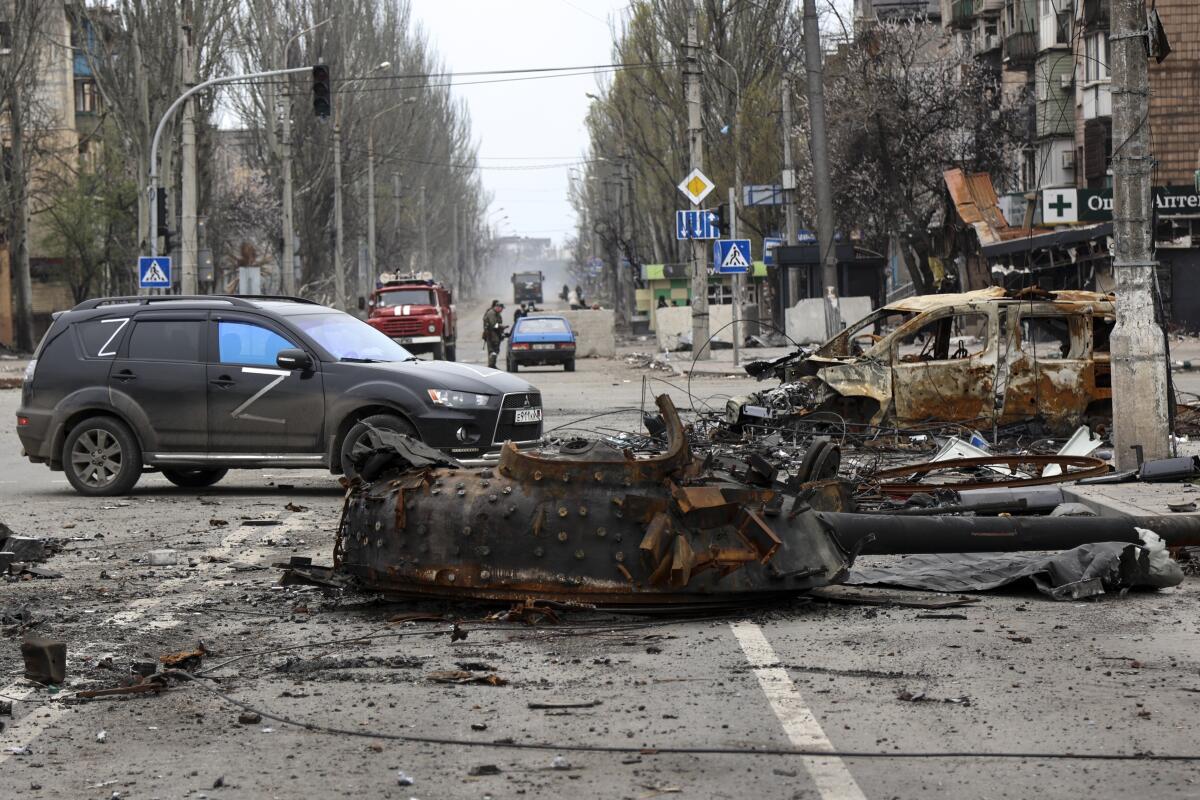
Putin’s order to besiege rather than directly attack the giant Azovstal plant means that “many Russian units remain fixed in the city and cannot be redeployed,” the British assessment said. The fight for Mariupol, it added, has “exhausted many Russian units and reduced their combat effectiveness.”
Mariupol remains largely cut off from the outside world, but may prove the scene of the war’s worst mass atrocities against civilians. Municipal authorities say an estimated 20,000 people have died in bombardment or of hunger and privation since the city came under attack in the first days of the war.
In his remarks in Poland, Blinken hammered on the theme that Moscow, despite superior firepower, has not succeeded in subduing its smaller neighbor. So far in the war, Russia has ravaged whole Ukrainian cities but also suffered setbacks, including a failed bid to capture Kyiv and the loss of its Black Sea flagship to what Ukrainian and Western officials said was a missile attack.
President Biden’s decision to dramatically ramp up delivery of artillery guns to Ukraine comes at a potentially crucial point in the war.
“When it comes to Russia’s war aims, Russia is failing. Ukraine is succeeding,” Blinken said. “Russia has sought as its principal aim to totally subjugate Ukraine, to take away its sovereignty, to take away its independence. That has failed.”
Following Blinken’s announcement of a renewed U.S. diplomatic presence in Ukraine, the White House said that President Biden would nominate Bridget Brink, currently the U.S. ambassador to Slovakia, as the next U.S. ambassador to Kyiv. The post has remained officially vacant since the previous ambassador, Marie Yovanovitch, was removed by then-President Trump three years ago.
Western unity over the war has been a linchpin of the Biden administration’s policy toward Putin, acting in concert to punish Russia economically and provide Ukraine with weapons.
Most European Union leaders were relieved after French President Emmanuel Macron won reelection Sunday over far-right challenger Marine Le Pen, who threatened to upend that solidarity.
The Russian invasion of Ukraine has now brought about a sea change in U.S. foreign policy.
Zelensky tweeted his congratulations to Macron, calling him, in French, a “true friend” of Ukraine. Putin, whose cordial relationship with Le Pen became a campaign issue, also congratulated Macron.
As fighting continued to rage, Russia’s Defense Ministry said that overnight and early Monday, its air force hit 56 targets it described as Ukrainian military infrastructure. Moscow also claimed to have hit a big oil refinery northwest of the central city of Dnipro.
Dnipro itself — a city of almost a million people that some consider the gateway to the Donbas region — felt almost normal, with shops open, restaurants operating and even traffic on the streets. By contrast, another key Donbas city, Kramatorsk, heard a steady soundtrack of explosions and sirens reverberating across abandoned roads.
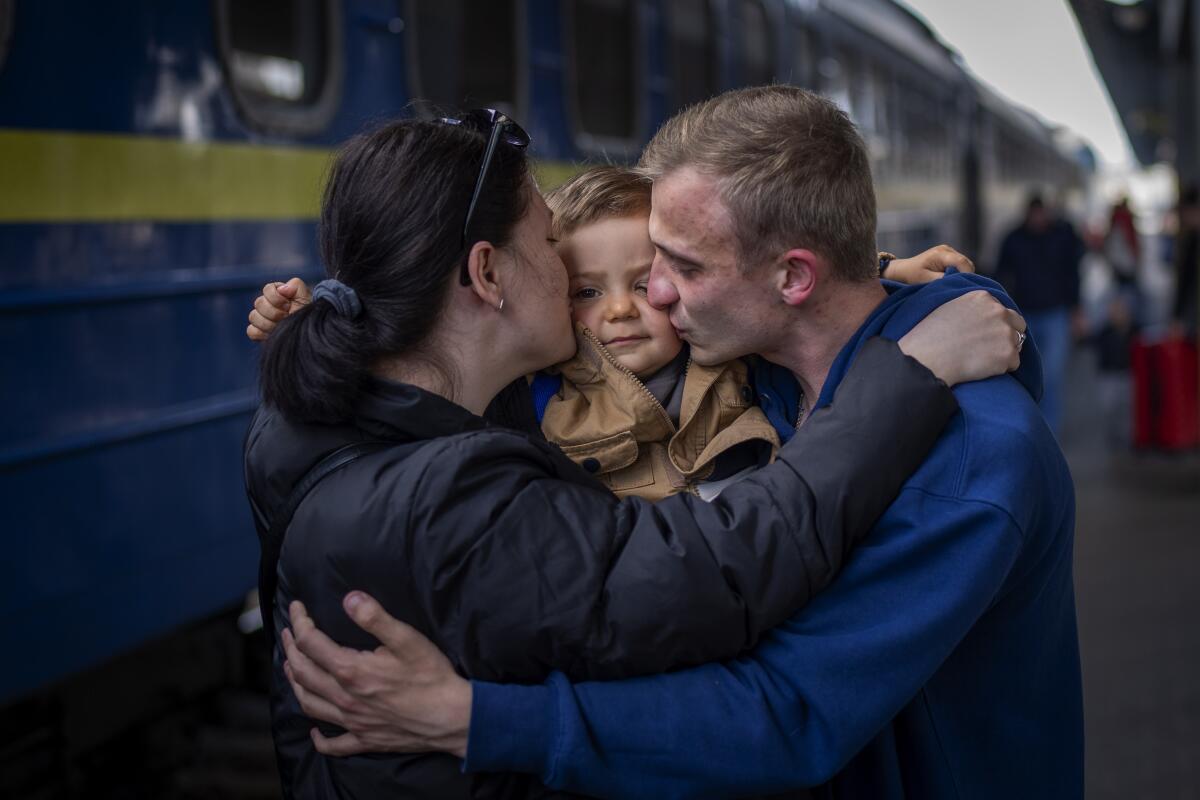
Reflecting concerns about stepped-up Russian attacks outside the eastern battle zone, the Kyiv regional administration said that starting Monday, the capital will be placed under an ongoing curfew between 10 p.m. and 5 a.m. Russia broke off its attempt to capture Kyiv nearly a month ago.
Elsewhere, Ukrainian officials took stock of death and damage from airstrikes that rained down unabated Sunday, when Eastern rite Christians celebrated Easter.
Luhansk, one of the two provinces that make up the Donbas, came under heavy shelling on the holiday, provincial Gov. Serhiy Haidai wrote Monday on Telegram. He said structures set ablaze included three high-rise buildings and four private homes.
The war also appeared to spill across Ukraine’s southwestern border Monday afternoon into Transnistria, a Russia-aligned breakaway enclave of Moldova. Several explosions rocked a security agency building in the region’s capital, Tiraspol. The local ministry of internal affairs said in a statement there were no injuries and initial data indicated the shots were fired from rocket-propelled grenades.
Ukraine’s intelligence agency of the Ministry of Defense claimed in a Facebook post that the explosions were a “planned provocation” carried out by Russian intelligence services. Russia did not comment on the attacks. Last week, a senior Russian military official told state media that Russia’s goal was to seize full control of southern Ukraine and open a land corridor to Transnistria.
As investigators gather evidence of possible Russian war crimes in Ukraine, family members visit mass graves and claim their dead in suburbs of Kyiv.
Reports also emerged early Monday that five railway facilities in the country’s west and center had come under fire, causing a yet-undetermined number of casualties. The head of Ukraine’s railways, Oleksandr Kamyshin, said information about the attacks was still being gathered.
One of the strikes was reported to have hit not far from Lviv, Ukraine’s main western hub, which has largely escaped the brunt of the fighting. The regional governor, Maksym Kozytskyi, said a missile struck a rail facility at Krasne, about 25 miles east of Lviv, setting it ablaze.
Earlier this month, in one of the most devastating single attacks of the war, about 60 people were killed at a train station in Kramatorsk as they waited for transportation out of the battle zone.
In striking at critical transportation infrastructure, Russia likely sought to disrupt Ukrainian reinforcements and logistics and demonstrate its ability to interfere with Western aid shipments, the Washington-based Institute for the Study of War wrote in an assessment.
However, the analysts concluded: “Russian precision strike capabilities will remain limited and unlikely to decisively affect the course of the war.”
Bulos reported from Dnipro, King from Berlin and Jarvie from Atlanta.
More to Read
Sign up for Essential California
The most important California stories and recommendations in your inbox every morning.
You may occasionally receive promotional content from the Los Angeles Times.
